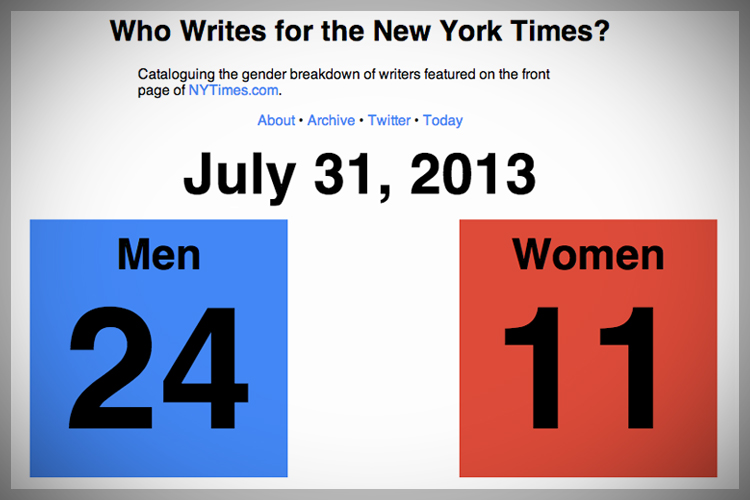After reading a 2011 VIDA report on journalism’s shocking (and shockingly persistent) gender gap, recent college graduate and developer Andrew Briggs came up with the idea to create a website that would track the imbalance between male and female voices in the media — in real time.
This week, it finally launched.
“Who Writes for the New York Times” does precisely what its title suggests: through a simple interface, it tracks the daily count of bylines by men and women on the paper’s front page.
More on how it works from the website’s methodology page:
At any given moment, NYTimes.com contains over 300 unique links to articles, images, video, and author profiles. In order to focus the scope of the project, rather than pulling each link, WhoWritesFor looks only for stories on the front page with bylines directly attached to them. These bylines are given elevated status by their location and prominence, and these names make up each day’s count.
Every five minutes, the WhoWritesFor backend scrapes the NYT front page usingBeautifulSoup. Of the approximately forty “story” div class elements, about ten of these (at any given time) contain bylines. These stories always fall in the two main columns at the top of NYTimes.com. The system saves these articles and matches their bylines against Bemmu’s gender-from-name dictionary, compiled from U.S. Census Bureau data. Each new male and female author is then added to the daily count, and their name and article is posted in the list below the count.
Briggs didn’t intend to single out the Times, but he does hope the profile of the site may build awareness across other outlets, as he told the First Bound: “I don’t think [the Times] deliberately imbalanced voices, but rather this is the kind of thing that happens when the people in charge aren’t really paying attention.”
It’s the “not paying attention” part that Briggs is really hoping to target with the website, as he went on to explain: “There are systems in place that affect what we do, what we read, what we watch and I think we have a responsibility to interrogate those systems.”
At the time of this post, the Times featured 24 men and 11 women on its homepage.


